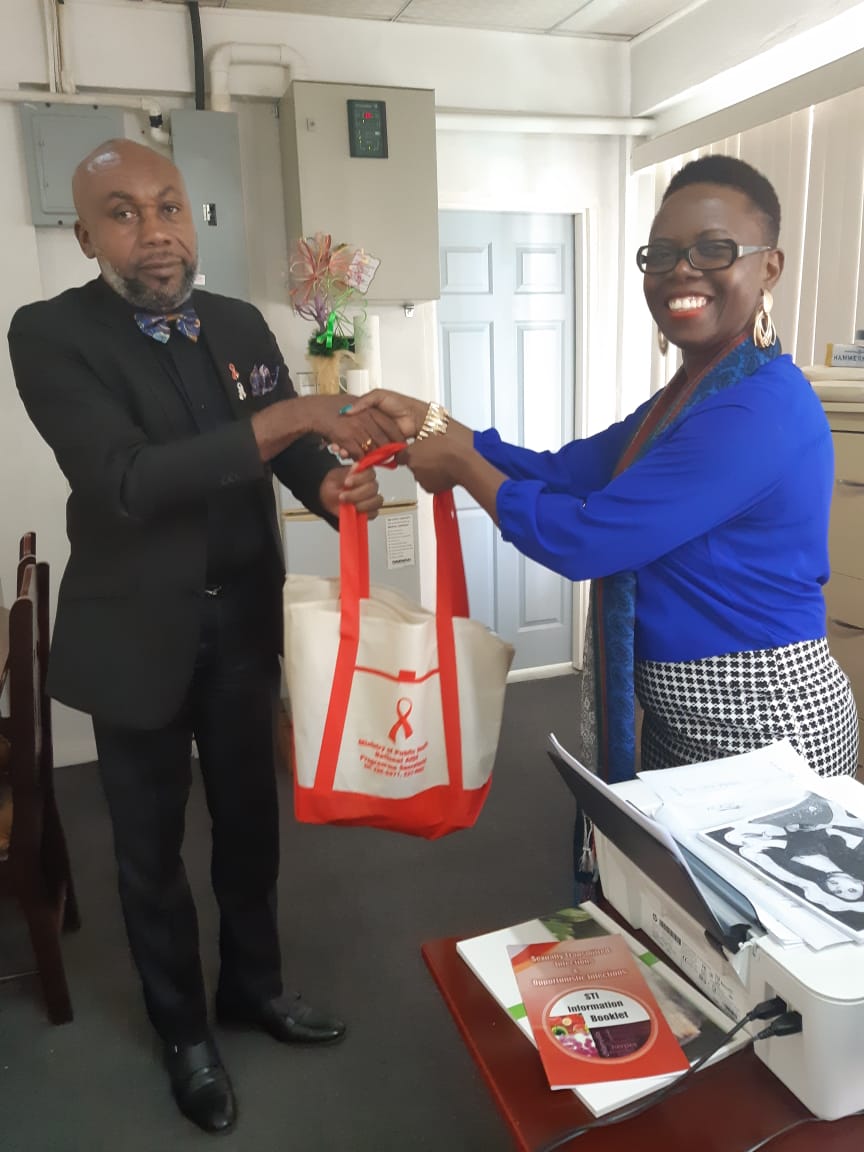
CRN+ seeks to improve access to public health services by People Living with HIV
Image: (L-R) Mr. Winfield Tannis-Abbott, CRN+ Chair presenting Dr Rhonda Moore, National AIDS Programme Manager, Guyana with a token of appreciation at the culmination of the dialogue.
The Caribbean Regional Network of People Living with HIV and AIDS (CRN+) facilitated a dialogue with health care providers and People Living with HIV (PLHIV) in Georgetown, Guyana in August. The dialogue encompassed discussions on the procedures of accessing services (testing, treatment, and care) in Guyana.
The event brought together representatives from the public treatment sites, Ministry of Health, National AIDS Programme Secretariat, National PLHIV Networks, Joint United Nations Programme on HIV/AIDS (UNAIDS), the Pan American Health Organization (PAHO) and CRN+.
The National AIDS Programme Secretariat opened the discussions with brief presentations on accessing services at treatment sites across Guyana and the importance of creating an Enabling Environment. Participants praised the initiative for focusing on the improvement of the system for accessing health services at public treatment sites.
The initiative forms part of a series of regional capacity building meetings by CRN+ which are intended to improve access to care and treatment by PLHIV.
WHAT IS PANCAP?
PANCAP is a Caribbean regional partnership of governments, regional civil society organisations, regional institutions and organisations, bilateral and multilateral agencies and contributing donor partners established on 14 February 2001. PANCAP provides a structured and unified approach to the Caribbean’s response to the HIV epidemic, and coordinates the response through the Caribbean Regional Strategic Framework on HIV and AIDS to maximise efficient use of resources and increase impact, mobilise resources and build the capacity of partners.
What are the Global AIDS Strategy 2021–2026 targets and commitments?
If targets and commitments in the strategy are achieved:
- The number of people who newly acquire HIV will decrease from 1.7 million in 2019 to less than 370 000 by 2025
- The number of people dying from AIDS-related illnesses will decrease from 690 000 in 2019 to less than 250 000 in 2025.
- The goal of eliminating new HIV infections among children will see the number of new HIV infections drop from 150,000 in 2019 to less than 22,000 in 2025.
What are the 95-95-95 Targets for ending AIDS?
- 95% of People Living with HIV know their HIV status;
- 95% of people who know their status on treatment; and
- 95% of people on treatment with suppressed viral loads.
HELPFUL LINKS:
Global AIDS Strategy 2021–2026, End Inequalities, End AIDS
https://pancap.org/pancap-documents/global-aids-strategy-2021-2026-end-inequalities-end-aids/
Caribbean Regional Strategic Framework on HIV and AIDS (CRSF) 2019-2025
https://pancap.org/pancap-documents/caribbean-regional-strategic-framework-2019-2025/
